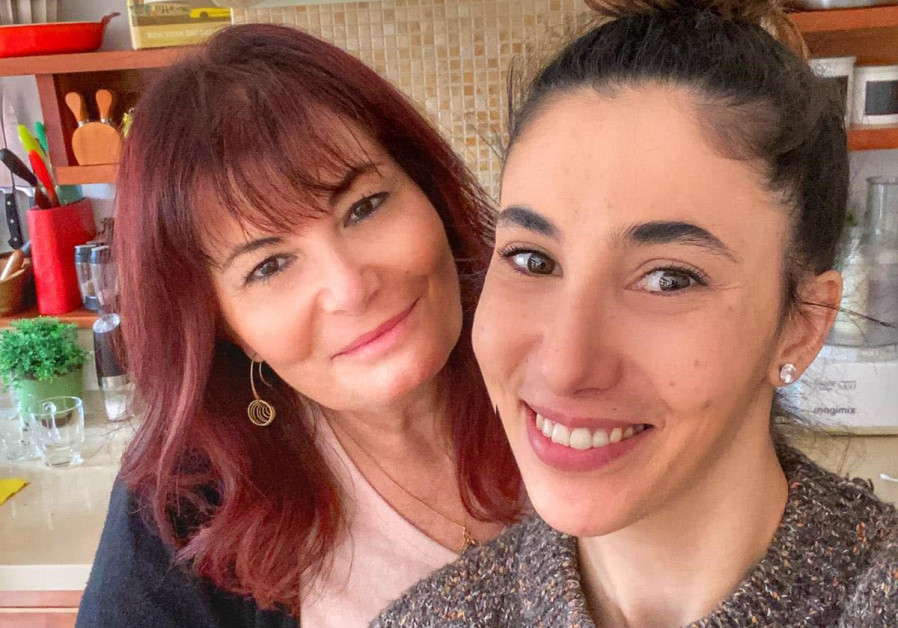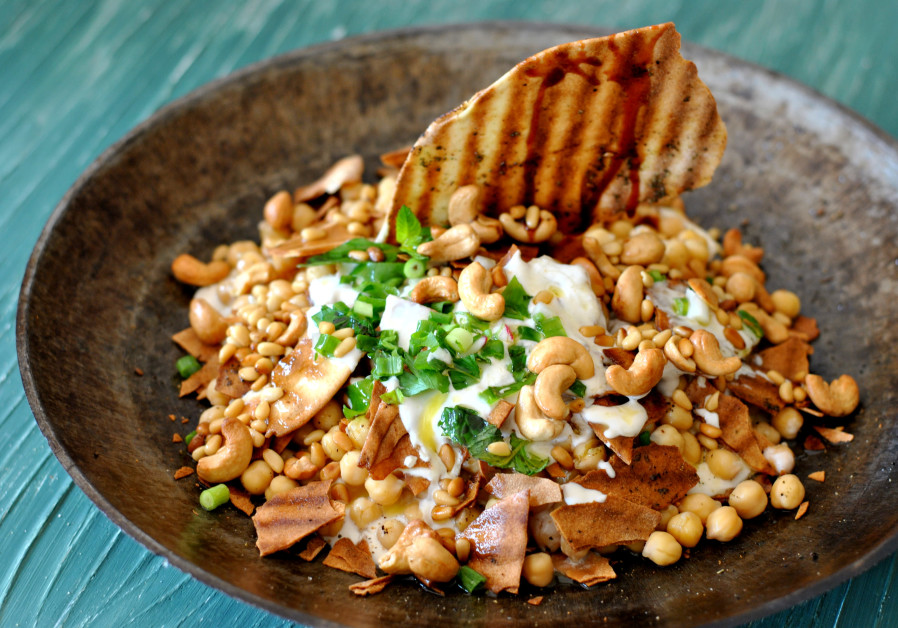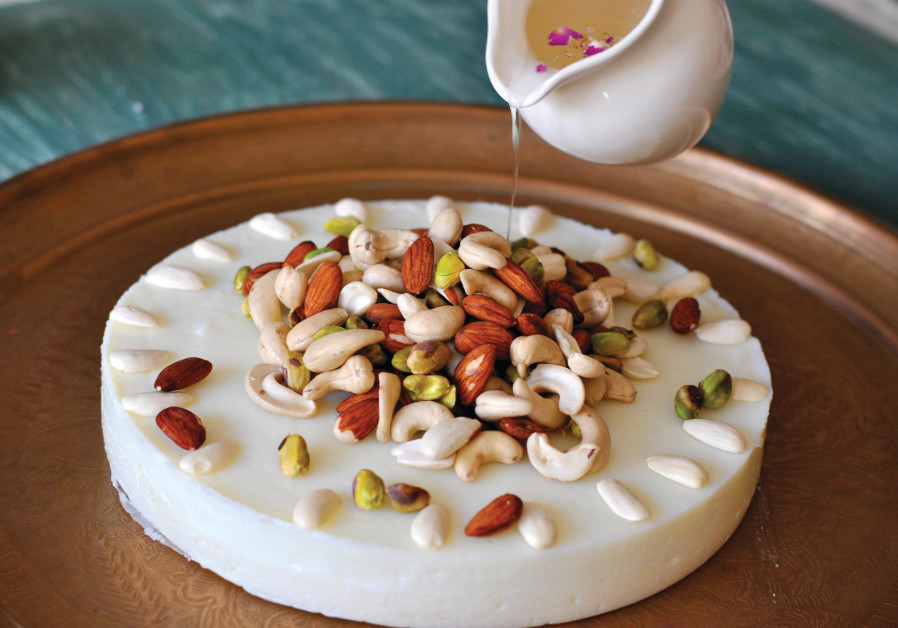When we were children, many of us dreamed of growing up to become lawyers, actors, doctors or scientists. But then we reached adolescence and had to make difficult decisions, including what we wanted to study in school. Some of us ended up making choices or in circumstances that were quite different from what we’d expected when we were younger. This is exactly what happened to Farah Raslan, a finalist in MasterChef Israel’s eighth season.
Farah had dreamed of becoming a fashion designer, or a scientist who would develop a cure for cancer. But these professions were not an option for a girl growing up in traditional rural Lebanon.
“I’d dream about going off to learn at university, doing a doctorate that included research for medicine that would help heal sick people,” she recalls. “I was a smart kid, so my first interaction with cooking involved lots of trial and error, as if they were a science experiment.”
But just as Farah was about to begin her chemistry studies at a Lebanese university, her father was seriously injured in a terrorist attack that left him disabled. The IDF had begun withdrawing from Lebanon, and so her family decided to leave home and move across the border to Israel.
Her early years in Israel were not easy. Slowly, she began to learn to read and write Hebrew and completed a bachelor’s and a master’s degree in biotechnology at Tel-Hai College, where she also worked as an assistant researcher in a food-tech lab at the MIGAL Galilee Research Institute. Farah still planned on fulfilling her childhood dream of pursuing a doctorate in cancer research.

Kamunat is a mixture of spices that is used in southern Lebanon to prepare kubeh, and it can be purchased in spice stores in northern Israel. Kamunat Banadura is served with large thin Lebanese pitot that are made from whole wheat flour that have a lace-like texture imprinted on them from the pillow on which the dough sits before it’s baked. They are somewhat similar to Druze pitot, but are much thinner.
½ cup bulgur, rinsed
½ kg. (3-4) tomatoes, grated coarsely
1½ Tbsp. tomato paste
¼ cup bulgur
1½-2 Tbsp. Lebanese kubeh spice
¼ small onion, chopped
1 scallion, chopped
Leaves from 2 sprigs of mint, chopped
2 basil leaves, chopped
2 sprigs of marjoram, chopped
Salt
½ cup olive oil
¼ cup mint leave, chopped
¼ cup scallions, chopped
½ cup dry white onion, chopped finely
1 spicy green pepper, chopped
3 radishes, sliced
Salt, to taste
To prepare mixture A, add the ingredients to a bowl and mix well. Let sit for 5 or 6 minutes.
To prepare mixture B, blend all the ingredients in a food processor for a few seconds at a time until it is coarsely ground.
Add mixture B to mixture A and mix well. Taste and adjust seasoning. Add more salt or kubeh seasoning if needed.
Transfer mixture to a serving bowl and use your finger to make a few shallow holes in the center of the mixture.
Drizzle olive oil generously on top. In a separate bowl, mix the mint, scallion, dry white onion and spicy pepper together, and then sprinkle it on top of the Kamunat Banadura. Add the radish slices in a circle around the edge and add the pine nuts and salt. Serve with pitot or tortillas.
 FATTEH HUMMUS
FATTEH HUMMUS2 cups (500 gr.) dried chickpeas, soaked overnight in water, with 1 teaspoon of baking soda, then drained
1 clove of garlic, crushed
3 Tbsp. fresh lemon juice
2 Tbsp. olive oil
Salt, to taste
Yogurt-tahini sauce:
2 cups yogurt
½ cup raw tahini
¼ cup lemon juice
2 cloves of garlic, crushed
Salt and pepper, to taste
½ cup water that the chickpeas were cooked in
1½ cups nuts (almonds, cashew and pine nuts) fried in a little olive oil and butter. Alternatively, you could purchase a bag of salted and roasted nuts.
1 spicy pepper, sliced thinly
½ cup parsley, chopped
1 cup mint, chopped
2 scallions, chopped finely
¼ cup olive oil
¼ cup pomegranate concentrate
Some sumac and dried rose petals
3-4 Lebanese pitot or a bowl of tortillas
Add the soaked and drained chickpeas to a pot and add water to cover. Heat over a medium flame, bring to a boil and skim off the foam.
Continue cooking over a medium-low flame for 90 minutes until the chickpeas have softened. Drain them and retain the cooking liquid. Add the garlic, lemon juice, olive oil and salt to the chickpeas.
To prepare the yogurt-tahini sauce, add the yogurt to a bowl and whip it with a whisk until smooth. Add the tahini, lemon juice, garlic, salt and chickpea water. Mix well.
Brush the pitot with olive oil and heat in a toaster oven for 2 minutes until they are crispy. Cut or break the pitot into small pieces.
Arrange the pita pieces on a large serving platter. Add the seasoned chickpeas and then pour on the tahini sauce. Add a few more of the pita pieces and then sprinkle the nuts on top. Add the peppers, parsley and mint. Drizzle some olive oil on top. Put a piece of pita in the center of the plate and drizzle the pomegranate concentrate on top. Add the rose petals and sumac. Serve hot.
 LAYALI LUBNAN
LAYALI LUBNANNatural nuts for adornment:
½ cup pistachios
½ cup cashew (not roasted)
½ cup almonds
¼ cup slivered almonds
Dried rose petals
Semolina base:
5-6 pieces of mastic gum, crushed with a mortar and pestle, mixed with 1 tsp. sugar
1 liter (4 cups) milk
100 gr. (½ cup) semolina
100 gr. (½ cup) sugar
Malabi (milk pudding) layer:
800 ml. milk
½ cup cream
1 Tbsp. sugar
80 gr. corn flour
2 drops rosewater concentrate
2 drops orange flower water concentrate
Syrup:
1 cup sugar
¾ cup water
Juice from ½ lemon
Soak the nuts in cold water for 90 minutes before preparing the dessert.
To prepare the semolina base, add the mastic gum, sugar and milk to a pot and bring to a boil over a medium flame. Add the semolina and the sugar and stir. Lower the flame and add one drop of the rosewater and one drop of the orange flower water concentrates. Continue stirring until mixture thickens. Pour the mixture into a lined pan and let cool.
To prepare the malabi layer, mix the milk, cream, sugar, corn flour and the other drop of rosewater and orange flower water concentrates in a pot. Heat over a medium flame and stir continuously until it thickens. Then, pour over the cooled semolina base.
Cover really well with plastic wrap, and if it’s summertime, place in the fridge. In the wintertime, you can leave it sitting on the counter.
Adorn the Layali Lubnan with almond halves around the edge and sprinkle the other nuts all around.
To prepare the syrup, add all the ingredients to a pot and cook for 5-10 minutes over a medium flame. Pour the syrup over the Layali Lubnan before serving.
